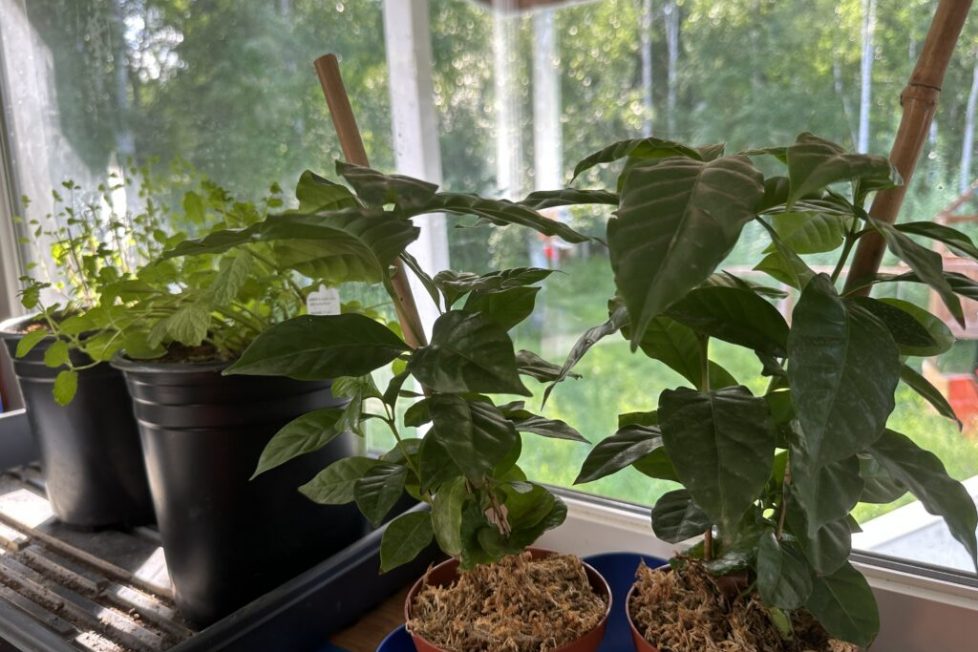Top Four Ways to Grow Food Year-Round in a Cold Climate – Rogue Preparedness – how to get prepared for emergencies and disasters

Since moving to Alaska, I am determined to produce food year-round. It sounds like a crazy concept, but I come from the south where there were probably two months, max, that I shouldn’t garden outdoors.
Of course, Alaska is a whole different beast.
If you live somewhere that gets and stay cold the majority of the year, there are ways to extend the season or even continue to grow year-round.
Living in a cold climate doesn’t mean you have to give up on gardening or wait for the warm months to enjoy fresh produce. With some planning and creative techniques, it’s possible to grow a variety of plants and enjoy gardening year-round, even in the chilliest of climates.
Build a Greenhouse: One of the most effective ways to extend the growing season and create a suitable environment for plants in cold climates is by constructing a greenhouse. Greenhouses provide a controlled microclimate that shields your plants from harsh weather conditions and allows for year-round cultivation. With the ability to regulate temperature, humidity, and light, you can grow a wide range of plants that wouldn’t typically thrive in colder conditions.
A greenhouse is also used in cold climates to grow heat-loving plants as it sometimes won’t even get warm enough outside during the summer for those heat-loving plants.
Keep in mind that if you choose to grow in a greenhouse year-round you will have to heat it. The most cost-effective way of heating a greenhouse would be with either wood or propane. There are solar heating options as well that you could explore, but it’s best to always have additional, backup heating sources for winter.
You can get creative and attach the greenhouse to your home so the greenhouse can also suck some of the heat from your home. However, this may also be drastic to heating your home, depending on how it’s setup. In most, you’ll want to simply want to make sure the greenhouse is above freezing temps.
Embrace Cold Frames: Cold frames are another valuable asset for cold-climate gardeners. These simple structures consist of transparent lids or covers that capture and retain sunlight, creating a warmer microclimate for your plants. Cold frames are typically low to the ground and can be made from materials such as wood, PVC, or glass. They act as mini-greenhouses, protecting delicate plants from frost and offering a cozy environment for growth. By placing cold frames strategically, you can take advantage of solar heat and extend the growing season for cold-hardy vegetables like kale, spinach, and lettuce. Many people use cold frames in the spring and fall to make sure their veggies make it in the ever-changing and unpredictable seasons of spring and fall in the far north.
Utilize Indoor Gardening: When the temperatures plummet outside, you can still nurture your green thumb indoors. Indoor gardening enables you to grow a variety of plants right in the comfort of your home. Utilize windowsills, tabletops, or invest in indoor grow lights to create a suitable environment for your plants. Choose cold-tolerant herbs like thyme, rosemary, or mint, or explore the world of container gardening with leafy greens, dwarf varieties of vegetables, or even dwarf fruit trees.
For indoor gardening in soil, I do recommend getting a little mini greenhouse so you can make it a little warmer and create more humidity inside the greenhouse inside of your home. This way you’re ensuring success, even if it gets colder inside of your home during winter.
Hydroponics is a fantastic indoor growing option as well because it’s low maintenance and can provide food all year. We have a countertop hydroponic system and we also 3-D printed a tower garden. Honestly, if all I got was lettuce from my indoor garden, I would be happy, because store-bought lettuce just isn’t appealing and goes bad so fast.
I grow many tropical plants like banana, lemon, orange and coffee indoors year-round and they thrive!
Microgreens and sprouts are also a great way to grow indoors as you can do this consistently all year long on a constant rotation to have fresh greens.
Experiment with Season Extension Techniques: To truly maximize your gardening potential in cold climates, consider experimenting with season extension techniques. Techniques like row covers, mulching, and cold-hardy crop selection can help you push the boundaries of traditional growing seasons. Row covers act as protective blankets, shielding plants from frost and freezing temperatures. Mulching helps retain soil warmth and moisture while insulating plant roots during colder months. Additionally, selecting cold-tolerant crop varieties specifically bred for cold climates can ensure successful yields without doing anything fancy like a cold frame or greenhouse.
I recommend this book about Indoor Gardening, as it covers a lot of basics and has a lot of ideas about how to grow many different types of fruits and vegetables indoors.
Living in a cold climate should never hinder your gardening aspirations. Start small with a countertop hydropinics system and a few pots of herbs.
With a little creativity, careful planning, and a dose of patience, you can cultivate a thriving garden, no matter how frosty the winters may be.
Let your green thumb flourish even in the coldest of climates!
Signup for FREE monthly newsletters with tips and advice!
You have successfully joined our subscriber list.
